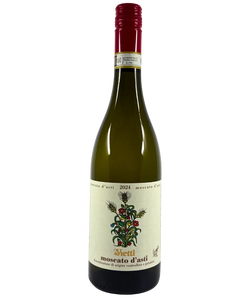When most people think of Prosecco, they picture something bright, fruity, and easy-drinking. A wine that’s just as at home at a beach picnic as it is at Friday night drinks. But Prosecco isn’t just one thing — and the Dal Zotto family, pioneers of Australian Prosecco, prove that beautifully with their 2022 Col Fondo Prosecco.
This is Prosecco made the traditional way, with more texture, more savouriness, and one key twist: it’s bottled without disgorgement, leaving the wine slightly hazy. It’s a style that harks back to Prosecco’s roots in Italy — and it shows just how much depth and character this grape can have.
Prosecco DOC vs. Conegliano Valdobbiadene DOCG
Before we dive into the Dal Zotto story, let’s clear up some confusion. Prosecco isn’t just a grape (renamed to Glera); it’s a protected Italian wine region. And not all Prosecco is created equal.
- Prosecco DOC – This covers a broad production zone across Veneto and Friuli. Wines labelled DOC must meet regional rules and pass a government tasting panel to ensure they taste like Prosecco should: light, fresh, fruit-forward.
- Conegliano Valdobbiadene DOCG – This is the high-ground, literally. Vineyards are planted on steep hillsides where hand-picking is essential, yields are lower, and wines are often more complex. DOCG comes with stricter rules and tighter tasting standards — the “G” stands for “Garantita,” as in guaranteed quality.
Think of it like Burgundy: village wines (DOC) are good, but the Premier and Grand Crus (DOCG) are where things get serious.

Caption: Sourced from Flavours Holidays
Dal Zotto: Prosecco pioneers in Australia
The Dal Zotto family brought Prosecco cuttings from Italy to the King Valley, Victoria, and became the first to produce Prosecco in Australia. Today, they set the benchmark. Their tank-method Prosecco even earned Prosecco of the Year.
But with the Col Fondo, they’ve gone back to the traditional method — more in line with Champagne production than modern Prosecco.
Six ways to make sparkling wine
Not all fizz is created equal. Globally, there are six main methods to trap those bubbles in a bottle:
- Traditional Method (Champagne) – Second fermentation in bottle, lees ageing, brioche notes.
- Transfer Method – Similar to traditional, but wines are filtered in tanks before rebottling.
- Tank Method (Charmat) – Prosecco’s modern way: fruit-driven and fresh.
- Carbonation – Injected CO₂, larger bubbles, fast and inexpensive.
- Asti Method – Fermentation stopped early, leaving sweetness and fizz (Moscato d’Asti).
- Ancestral Method (Pét-Nat) – Bottled mid-fermentation, rustic, lightly fizzy, often hazy.
Dal Zotto’s Col Fondo uses the traditional method, not the tank method you see in most Prosecco today. That alone makes it unusual.
Why Col Fondo is unique
- No disgorgement – The lees stay in the bottle, giving a cloudy look and savoury depth.
- Oxidative twist – While most Prosecco is made reductively (to highlight fruit), Col Fondo leans more oxidative, adding nuttiness and texture.
- Balance of fruit + savoury – Expect citrus, apple skins, almond, and mineral grip alongside classic freshness.
It’s a more serious, food-friendly Prosecco — something that works as well at the table as it does at aperitivo hour.
Final sip
The 2022 Dal Zotto Col Fondo Prosecco is a masterclass in how versatile Prosecco can be. From their bright, award-winning tank-method Prosecco to this hazy, traditional-method gem, Dal Zotto shows that Australia isn’t just following Italy’s lead — it’s adding its own spin.
If you’ve only ever thought of Prosecco as light, fruity, and simple, Col Fondo will change your mind. It’s savoury, complex, and just a little bit wild — all while staying true to its roots.










